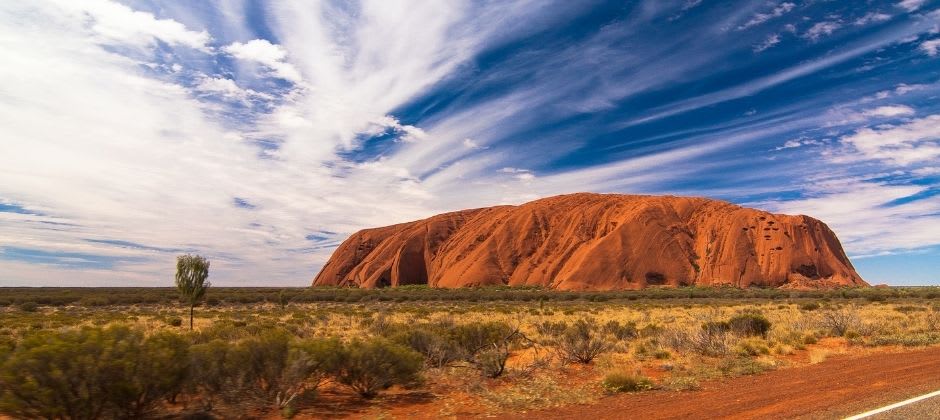Study in Australia: Language & Culture
The culture of Australia is primarily a Westernized culture, derived from Britain but also influenced by the Aboriginal, Torres Strait Islander and other Australian groups. The British colonization of Australia began in 1788, and after that, waves of multi-ethnic migration followed in the country for the next 250 years.

The culture of Australia is primarily a Westernized culture, derived from Britain but also influenced by the Aboriginal, Torres Strait Islander and other Australian groups. The British colonization of Australia began in 1788, and after that, waves of multi-ethnic migration followed in the country for the next 250 years. This is the reason why in Australia you can find yourself immersed into multiculturality.
If someone was asked to describe the Australian culture in one word that would be egalitarianism. Aussies hold in high regard the idea of the ‘’fair go’’ which is the belief that everyone should be given an equal opportunity in life regardless of their background.
As a result, a person’s education or wealth does not earn someone’s respect necessarily. The Australian culture is extremely diverse and people are also characterized as an easy going, relaxed and friendly nation which enjoys food, culture, arts and also being outdoors practising sports. In fact, cricket is considered Australia’s most popular national sport. Australian friendships are perceived as especially loyal. It is common for people to rely upon their friends or “mates” as they call them.
The most important part of the Australian culture is its roots to the past. Aboriginal and Torres Strait Islander people have the most ancient continuous culture on Earth! These sub cultures include an extensive mix of traditions and customs and are widely respected by the Aussies. The Aboriginal and Torres Strait Islander people philosophy is mostly based on spirituality, ecology and consensual-communal organization.
Australian Food Culture
The Australian food culture is a diverse culinary terrain influenced by a variety of cultures like the British, the European, the Asian or the Middle Eastern. An iconic part of the Australian food culture is without doubt the Vegemite, a dark brown spread made of spices, yeast and vegetables. You need to try it for sure when visiting Australia, so you know whether you will be a fan of it or not!
Don’t forget to try the country’s favorite chocolate, the famous Tim Tam, chicken parmigiana (influenced by the Italian culture though), barramundi grilled fish, Anzac biscuits, tasty macadamia nuts, Australian wines, meat pies and...kangaroo or emu meat burgers! Yes, Australians love to barbeque and they tend to eat these cute animals which are also the country’s emblems, since their meat is super healthy and of great quality. In contrast, koalas are not consumed by the Aussies, since they are listed as endangered species.
If you love coconut, then we found the best dessert choice for you: the Lamingtons, a sponge cake covered with chocolate and raspberry sauce and filled with coconut on top. Perfect to accompany your afternoon tea or coffee. However, the most famous dessert of the country, which is also a matter of dispute with New Zealand regarding its origin, is the famous Pavlova. Pavlova, a meringue cake base topped with a lot of whipped cream and fruits, is delicious and a must when living in Australia.
If you are looking for a more special culinary experience, then you should know that the Australian food culture won’t disappoint you at all. You can try the Bush Tucker or Bush Food, the unique hunter diet created by the Indigenous Australian populations that inhabited the country for more than 60,000 years. Experiencing this cuisine will give you the opportunity to try dishes that include bogong moths, witchetty grubs, lizards, snakes or even crocodiles...enjoy!
Languages Spoken in Australia
But did you know that Australia is the continent in which languages are disappearing the fastest? There are countless languages spoken in Australia, especially in the islands of the Pacific ocean, with the Aboriginal and Torres Strait Islander being among the most endangered ones. There is no official language in Australia and English has been established as the de facto national language since the end of the 18th century, also used widely in education today.
Australian English is distinguished from other English variants with its distinctive pronunciation, grammar and spelling and is spoken by 73% of the Australian population. As a result, Australian English is considered as an English language dialect. But what other languages spoken in Australia exist? The remaining percentage is covered by Mandarin, Arabic, Cantonese or Vietnamese or other minority languages.
Nowadays there are more than 400 Australian aboriginal languages. Only 20 of them are still in use and more than 100 are only spoken by elderly population throughout the country. You might not need to know any of them in order to live and study in Australia, but imagine what a unique experience it would be to meet local people that speak these endangered languages and record them!
There is a percentage of around 12% of the Australian indigenous population that still speaks this language in everyday life so fingers crossed you meet one of them! Plus, Australia is also home to a plethora of sign languages with the most widely spoken one being the Auslan sign language.
Study in Australia - Overview
Over 700,000 international students choose Australia as their study abroad destination every year. Click here to learn why.
Education System
Want to learn about how the higher education system works in Australia? Australia is a popular destination for a variety of students, given its diverse programs, affordable education and its culture and history. Take a minute to find out more about the structure of the education system in Australia!
Student Visas
Do you need a visa to enter Australia to study? Learn more about the student visa process, and what you need to enter the country, depending on your citizen status. You will also be required to bring certain documents with you to passport control at the airport, which we cover as well.
Housing & Living Costs
No matter where you study abroad, it’s important to create a budget in advance so that you’re prepared. Therefore, we’ve detailed average living and housing costs so that you can get a better idea of what you would be paying as a student in Australia.
Tuition Fees & Scholarships
Tuition fees for degree programs in Australia may vary. Both international and domestic students are expected to pay tuition fees in Australia. To cover the rest of the costs, there’s plenty of scholarship opportunities available.
Application Process
All countries have specific admissions requirements for students to gain acceptance into a university. Learn more about the ins and outs of admission to programs in Australia, and what you need to apply, depending on your citizenship.
Programs
Ready to look at education in Australia? Use our search engine to find and compare top programs in Australia today!

Keystone Team
Author
The Keystone Team is comprised of experienced educators and advisors dedicated to providing valuable resources and advice to students all over the world.